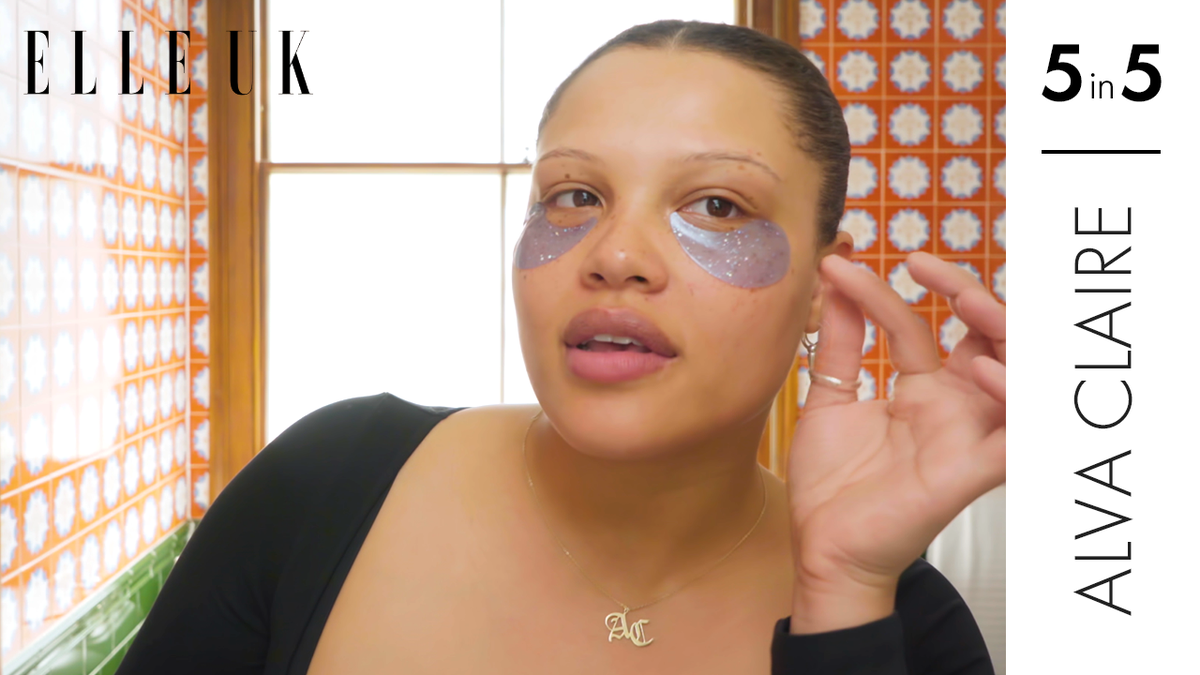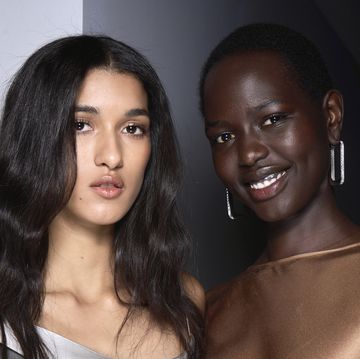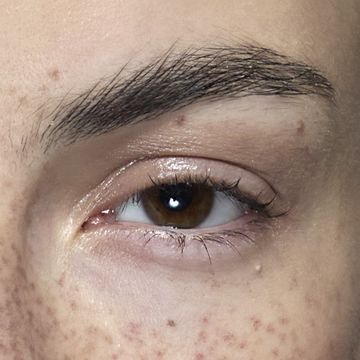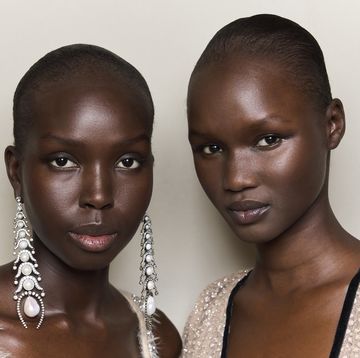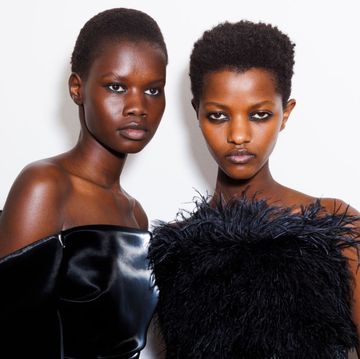With the temperatures rising, it’s hardly surprising that everyone's discussing sun protection (although skincare junkies out there will know that if you care about your skin, sun protection isn’t just for heatwaves, it’s for every day.) So you would imagine that some of your favourite serums and moisturisers getting a makeover and boasting added sun protection would be nothing but delightful news. Two birds, one stone and all that.
La Roche Posay’s Hyalu B5 Serum was joined last year by Hyalu B5 SPF30 Aquagel; Olay Regenerist added a Day Face Cream with SPF30 to the range, while you can now get L’Oréal Paris Revitalift — the brand’s flagship anti-ageing range as a Filler + Hyaluronic Acid SPF50 Replumping Day Cream. It sounds great, right? Why bother with two creams — your regular moisturiser and an SPF — when you can use just one?
But, as is often the case, things aren’t quite as simple as that.
First up, the good news is that if a cream says SPF on it, whether it’s a moisturiser, a primer, a foundation or a dedicated sun protection product, you know it’s been tested in exactly the same way as a straight up SPF. So, any product with SPF30 should let you spend 30 times as long as you normally would in the sun without getting burnt — with one major caveat: provided you apply the correct amount — 2mg per square centimetre, or around half a teaspoon for your face and neck. So if you’re used to delicately applying a smear of moisturiser to your cheeks, that’s not going to cut it. The same goes for a pea-sized application of foundation. It's simply not enough.
Dr Sonia Khorana, an NHS GP and community dermatology doctor based in the West Midlands (@dermgp on Instagram), has other concerns too. ‘If you’re getting your sun protection from your daily serum or moisturiser, it might be less likely to be water resistant or rub resistant like a dedicated sunscreen’ — those products are designed to stick to your skin in a way that moisturisers aren’t. But, Khorana also points out that SPF is only a marker of UVB protection — so although it predominantly stops you burning, it doesn’t tell you much about the protection you’re getting from UVA, the rays most associated with ageing and skin cancers.
Initially, I thought the more products that contained sun protection the better. After all, half a teaspoon is a lot of product to put on your face in one go, but one sixth of a teaspoon isn’t. So if I had an SPF50 primer, an SPF50 moisturiser and an SPF50 sunscreen and layered up one sixth of a teaspoon of each, eventually making a cumulative half teaspoon, I’d have full protection? Not according to skincare formulator Nausheen Qureshi.
‘If you’re using three different products, you’ll probably find each one uses a different combination of UV filters,’ Qureshi explains. ‘There is no single filter that protects against the entire range of UV radiation, so formulators combine different filters to give broad spectrum protection. If you layer three different products, you might get overlap in some places, but there might be gaps in others.’ It’s a bit like layering up three different slices of holey Swiss cheese — in some places, they’ll be three layers thick, and you’ll get full protection, in others, you’ll only be getting one or two layers of protection.
And there’s more bad news.
‘Adding sun protection to a formulation isn’t as simple as just adding a filter into what you’ve already got,’ Qureshi continues. ’Some active ingredients — acids, retinoids — don’t work well with UV filters, and sometimes you actually might have to lower levels of the actives in order to be able to get the levels of UV filters that you need into the product.’ I asked her to analyse the ingredients listings for the previously mentioned L’Oréal Paris and Olay products.
‘For the L’Oréal Paris one you would need about 35% of the formulation to be sunscreen actives, excluding the water and oil in the formulation, leaving very little “space” for extra actives that you may want in a normal skincare routine. For the Olay one, 45% of active ingredients are needed for their proposed level of sun protection. Again little space for the rest of the ingredients, although there’s a good amount of niacinamide in this one.’
So while at first glance, sun protection in your regular moisturiser looks like a nice way of skipping a step, or adding some extra protection, it’s sadly not as straightforward as it seems. ‘The best solution for your skin is to use an active-filled serum [serums pack more of an active punch than moisturisers] about 20 minutes before your sunscreen, and then apply half a teaspoon of a broad spectrum dedicated sun protection product,’ says Nausheen. ‘That way you’re not compromising on anything.’ And, if you have dry skin that needs a moisturiser, apply before your sunscreen and let it sink in.
The idea of time-saving, money-saving, all-in-one skincare might be appealing, but as is often the case, when something sounds too good to be true, it usually is.



